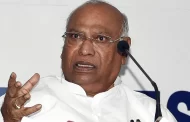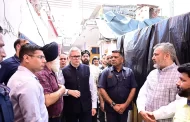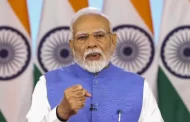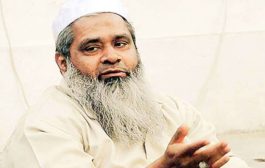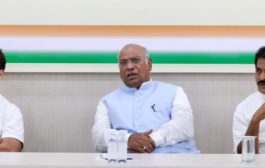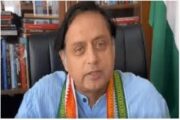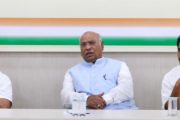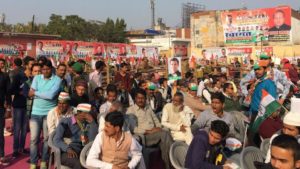
He came, but late; he saw, but it was an obviously limited crowd, and he conquered, but only a slice of society.
The crowds had started trickling in around 2 pm on Monday – but it never escalated to a wave, for after two and a half hours, when Rahul Gandhi’s chopper arrived, rows of empty chairs remained.
Rahul had come to canvass for the Congress candidate from the Bareilly cantonment seat, Nawab Mujahid Khan. The constituency has over 100,000 Muslims – and local buzz is strong that the community is consolidating entirely behind the candidate. Going to polls on 15th, in the second phase, the SP-Congress alliance has more than a fighting chance here.
The build-up
The SP and Congress flags merged seamlessly. The posters had images of leaders of both the parties. And a Congress supporter, waiting for Rahul, excitedly told us, “Jai and Veeru have come together to defeat Gabbar Singh. Jai is Rahul and he will rule Delhi, Veeru is Akhilesh and he will rule Lucknow, and you know who is Gabbar.”
When asked why the crowds were sparse, a SP supporter who had come to attend the rally said it was all voluntary. “Modi’s crowds are all paid for. Ham dil se aate hai.”
Both the supporters – like almost the entire audience – was Muslim. And the preliminary speakers were emphasising the BJP’s ‘communal politics’.
One speaker, from Jharkhand, attacked BJP for ‘love jehad’ – “BJP should ask Mukhtar Naqvi, it should ask Shahnawaz Hussain who they married; it should ask Subramanian Swamy who his daughter married.” Another speaker accused BJP of fomenting a Hindu-Muslim divide and said it was time to defeat them. The crowd, now getting restive, did not pay much attention.

From made in China to make in UP
When Rahul arrived, there was only half an hour to go before campaigning had to formally end for the second phase of the elections, and so the rush was palpable. The speech was laced with sincerity, but it lacked energy, focus and often meandered.
Rahul began with a straight message – India’s biggest challenge is jobs. “Modiji had said they will create 2 crore jobs. I asked them in Parliament. How many jobs have you created? One minister said they created one lakh jobs in the first year. In the second year, they created no jobs.” And then Rahul subtly played the religion card. “Modiji makes fun of Manmohan Singh. There are Sikhs here. Manmohan Singh created ten lakh jobs a year as PM.”
But Rahul’s speech was striking for its complete silence on issues of communalism that speakers before him had tried to rally the crowd around. Despite the Muslim composition of the crowd, he stayed away from accusing the BJP of being anti-minority.
One explanation for this is that he wanted to have a clear message that resonated across castes and communities. But the other is that by focusing on those issues, he would have only ended up aiding the polarisation. Back in Bihar in 2015, Muslim community leaders had told the Mahagatbandhan leaders not to speak about them at all – for it gave BJP a chance to consolidate the Hindus. Was something similar happening here?
The crowds cheered most when Rahul spoke of demonetisation – “The plan is simple. Get the poor to deposit their money in banks. Keep it there for some months. And then use it to waive off loans of 50 big families.” The crowd also cheered when Rahul had a dig at Modi and the media – “Media is under Modiji’s pressure. And so when Modiji waives off the 6 lakh crore loan of 50 families, it will only appear on the back page. You will have to look for it carefully.”
But the crowd lost him entirely when Rahul went on to narrate an anecdote. “I went to China and met a local neta over lunch. I kept asking him about China; he kept asking me about Himachal. I said arre Bhaiya India is such a big country, why are you only asking about Himachal? And he said we compete with apples from Himachal and want to see a day when Made in China items are sold there.”
After a long detour into farm loans and demonetisation, Rahul returned to the story and said he wanted to see a day when Obamaji ‘now that he is free’ and his friend in China would see products with a Made in Allahabad, Made in UP sign.
The problem was not as much with the message of the story – that UP needed to boost manufacturing and exports – than the fact that it lacked coherence and roadmap of how UP would get there.
In the middle of the speech, every few minutes, from one segment of the crowd, came chants of Rahul Gandhi Zindabad, interspersed with Narendra Modi Murdabad. That was when Rahul mildly rebuked the crowd. “We are not a murdabad party. We will defeat them on issues and policies, not with anger.”
A few minutes before 5 pm, Rahul’s close aide Kaushal Vidyarthee nudged him, and the Congress vice president hastily wrapped up his speech – to not fall into trouble with EC guidelines
Crowd reaction
As we walked out, Ahmed, a Congress worker, said he liked the speech. What did he like about it? “Rozi-roti ki baat ki, he talked about livelihood.” Another said he liked the emphasis on unity rather than division.
Rahul’s Bareilly speech was both a sign of the strengths and weaknesses of Congress party and the alliance.
The limited audience reflected the fact that the party’s organisational machinery and mobilisational capacity remains limited. Rahul and the alliance has a captive audience in Muslims – but if this rally was an indication, they have not made much headway in expanding beyond Muslims into other communities. Rahul’s speech itself spoke to larger universal, material needs of the people – but the absence of any prescription of how to address these needs took away from its strength. It also lacked the metaphors, the connect for a speech to resonate long after the speaker has departed.
Congress may win Bareilly cantonment, but it will need to do a lot more to win the state.(HT)



